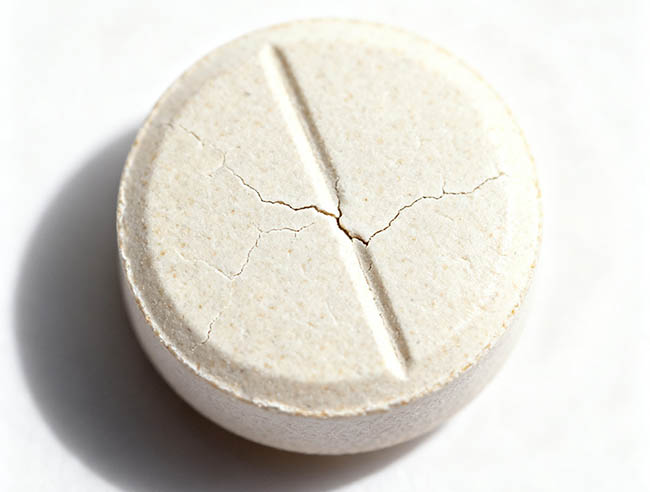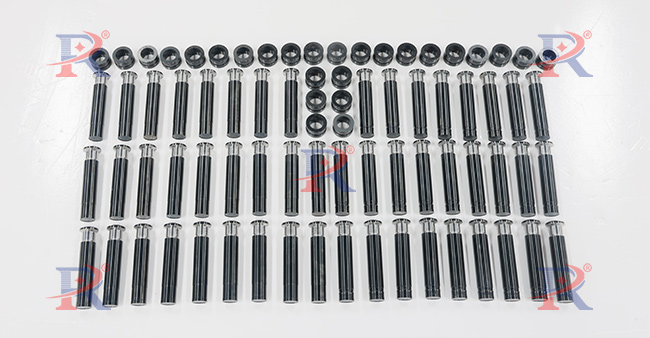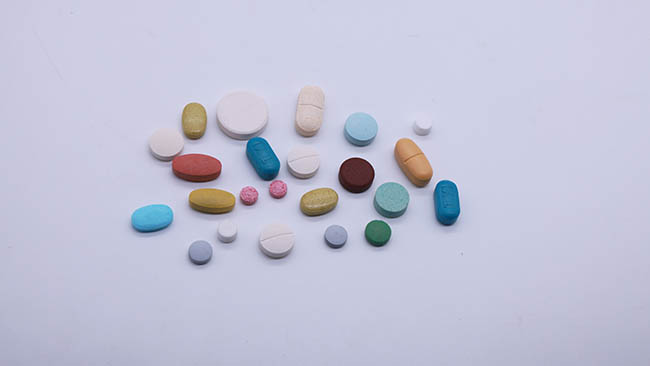Blister is a widely used and popular packaging method, which forms blister structures of different sizes and shapes by heating the plastic material and using molds and pressure differences. Blister packaging machines are widely used in pharmaceutical, food, personal care and cosmetic industries. According to different production processes, can be divided into hot molding, cold molding, roller, flat and other types, for different products to choose different models can meet different product needs. Below, you’ll find detailed descriptions of the primary types of blister packaging machines.
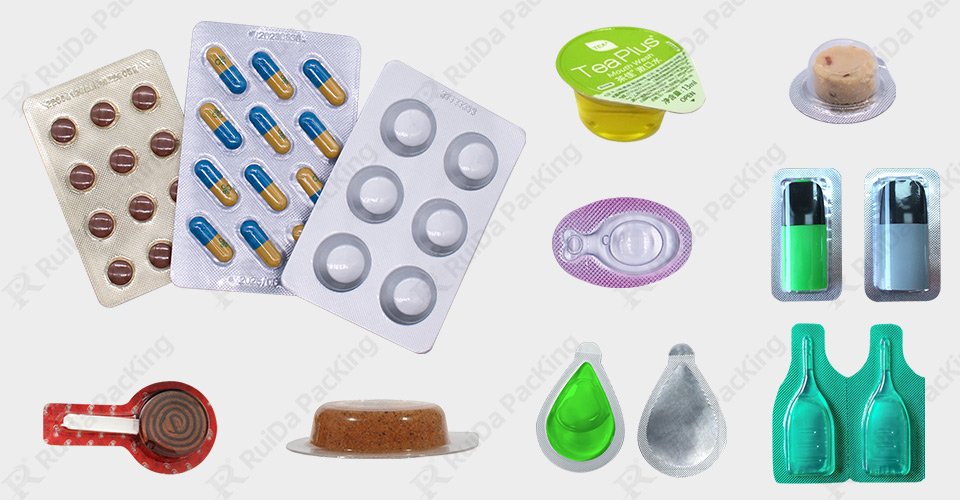
Thermoforming Blister Packaging Machines How It Works
The process is completed by molding single or multiple individual cavities into the desired shape using pressure or pneumatic pressure, placing the product into the cavities through a downcomer, sealing them with a backing material (usually aluminum foil or cardboard), and punching and blanking them into individual panels.
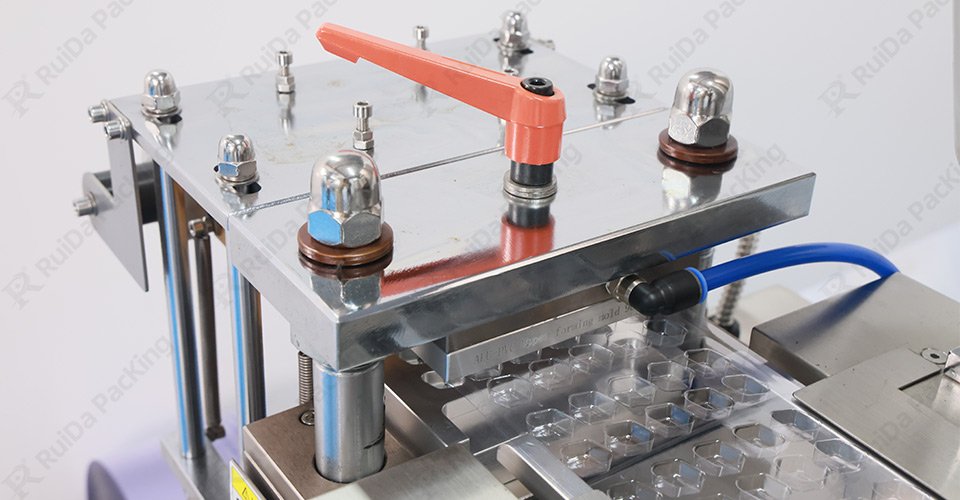
특징
– Versatility: Thermoforming machines can accommodate various materials like PVC, PET, and PP.
– High Speed: Capable of producing large quantities in a short time.
– Customization: Machines can be configured to create different shapes and sizes of blisters.
응용 프로그램
Thermoforming blister packaging machines are widely used in the pharmaceutical industry for packaging tablets and capsules, in consumer goods for items like batteries and toys, and in the electronics industry for products like USB drives and cables.
Cold Forming Blister Packaging Machines How It Works
Cold forming blister packaging machines use a process where a sheet of aluminum foil is pressed into a mold to create cavities without applying heat. The aluminum foil is typically laminated with plastic and other materials to improve its barrier properties. After forming the cavities, the products are inserted, and the package is sealed with a secondary layer of material, usually a heat-sealable film.
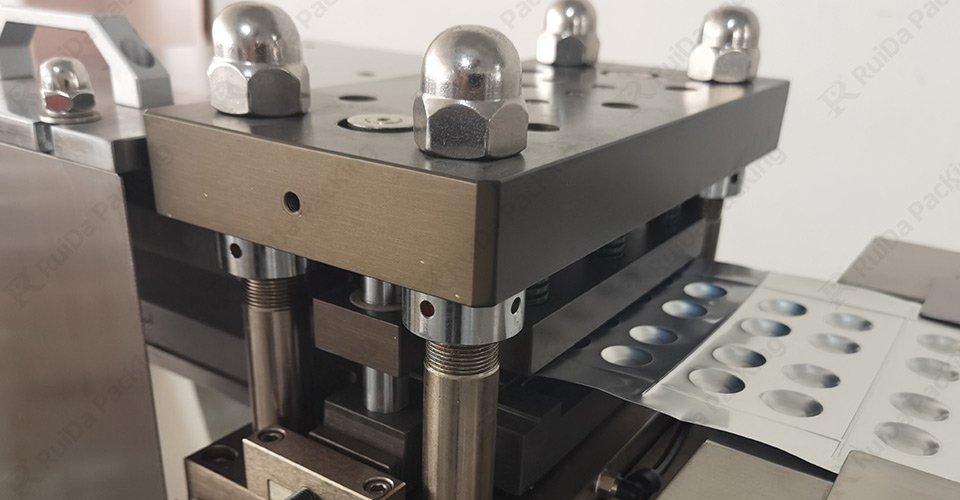
특징
– Superior Barrier Protection: Cold forming provides an excellent barrier against moisture, light, and oxygen, making it ideal for sensitive products.
– Durability: The packaging is robust and can protect fragile items during transit.
– Longer Shelf Life: Cold-formed packaging extends the shelf life of products by providing better protection.
응용 프로그램
Cold forming blister packaging machines are primarily used in the pharmaceutical industry for packaging moisture-sensitive products like capsules, tablets, and certain medical devices. The technology is particularly valued for ensuring the stability and integrity of the product throughout its lifecycle.
Roller High Speed Blister Packing Machine How It Works
Roller high speed blister packing machine utilize continuous rollers to form blister cavities and seal the product. The process involves feeding a plastic film through heated rollers that mold the cavities. After forming, the product is placed into the cavities, and a sealing material, usually aluminum foil, is applied. The finished product is then punched and cut into individual packages.
특징
– High-Speed Production: Designed for mass production needs, continuous roll forming production for high speed manufacturing.
– Consistency: Efficient and stable performance ensures packaging conformity and accuracy during long production runs.
– Efficiency: Roller-type machines maximize production efficiency by minimizing downtime.
응용 프로그램
Roller-type blister packaging machines are commonly used in industries requiring high-speed packaging, such as food and beverage, pharmaceuticals, and electronics. They are ideal for products that need to be packaged in large volumes with consistent quality.
Flat-Plate Blister Packaging Machines How It Works
Flat-plate blister packing machine form cavities using a flat mold, where a plastic film is pressed into shape. Unlike roller-type machines, flat-plate machines use a stationary forming process. After the cavities are formed, the product is placed into the blister, and the package is sealed with a backing material. The final step involves cutting the blisters into individual packages.
특징
– Precision: Flat-plate machines offer high precision, making them suitable for packaging small or delicate items.
– Flexibility: We can customize different sizes and shapes of molds to meet the needs of different products.
– Low Waste: Reduced waste through rational layout.
응용 프로그램
Flat-plate blister packaging machines are frequently used for smaller production runs, where precision is paramount. This makes it ideal for packaging demanding items such as pharmaceuticals, small medical devices, high-end consumer products and electronics.
Continuous Blister Packaging Machines How It Works
Continuous blister packaging machines operate with an uninterrupted workflow, where the plastic film and backing material are continuously fed through the machine. The forming, filling, and sealing processes happen in a seamless sequence, reducing downtime and increasing throughput.
특징
– High Efficiency: Continuous machines minimize idle time between processes, maximizing productivity.
– Automation: These machines are often fully automated, reducing the need for manual intervention.
– Scalability: Continuous systems can easily scale up for larger production volumes.
응용 프로그램
Continuous blister packaging machines are well-suited for industries that require high-volume production, such as food, cosmetics, and medical devices. Their efficiency and speed make them ideal for products that need to be packaged quickly and consistently.
Semi-Automatic Blister Packaging Machines How It Works
Semi-automatic blister packaging machines combine manual and automated processes. Typically, the operator loads the products and materials into the machine, which then handles the forming, sealing, and cutting processes automatically. The operator may also be involved in quality control and packaging assembly.
특징
– Flexibility: Semi-automatic machines offer flexibility in production, making them suitable for small to medium production runs.
– Cost-Effective: Suitable price compared to fully automated, suitable for small-scale production enterprises.
– Ease of Use: Easy to operate and reduce learning costs.
응용 프로그램
Semi-automatic blister packaging machines are commonly used in small to medium-sized businesses that need to balance production efficiency with cost control. They are ideal for companies that produce a variety of products in smaller quantities, such as niche consumer goods, specialty foods, and artisanal products.
Fully Automatic Blister Packaging Machines How It Works
Fully automatic blister packaging machines handle all aspects of the packaging process without human intervention.After the equipment completes the material filling, it can automatically complete the heating of plastic sheet, blister pressing and molding, product discharging and filling, back plate heating and sealing and punching and packaging. The whole production process is completed by advanced control system, which can monitor and adjust the whole production process.
특징
– High Throughput: Fully automated production eliminates the need for manual labor, shortens cycle times, and provides production efficiencies that make it suitable for high-volume production needs.
– Precision and Consistency: Automation ensures that every package is produced to the same high standard, reducing the risk of errors.
– Advanced Technology: These machines often come with features like touch-screen controls, remote monitoring, and integration with other production systems.
응용 프로그램
Fully automatic blister packaging machines are used in large-scale production environments, such as pharmaceuticals, electronics, and consumer goods manufacturing. They are the preferred choice for companies that prioritize efficiency, precision, and the ability to handle large production volumes.
Factors to Consider When Choosing a Blister Packaging Machine
When selecting the right blister packaging machine for your needs, several factors must be considered to ensure you make the best choice. These factors will help you balance production requirements, budget, and product specifications.
생산량
고려 사항
The scale of your production will significantly impact your choice of machine. If you need to produce thousands of units per hour, a fully automatic or continuous machine will be necessary. For smaller production volumes, a semi-automatic or flat-plate machine may suffice.
추천
– High Volume: Fully automatic or continuous machines.
– Medium Volume: Roller-type or thermoforming machines.
– Low Volume: Semi-automatic or flat-plate machines.
Type of Product
고려 사항
The nature of the product being packaged also influences machine selection. For moisture-sensitive products, a cold forming machine may be essential. If the product requires precision packaging, a flat-plate machine might be more suitable.
추천
– Moisture-Sensitive: Cold forming machines.
– Fragile/Delicate: Flat-plate machines.
– General Consumer Goods: Thermoforming or roller-type machines.
Cost and Budget
고려 사항
Your budget will determine the type of machine you can afford. While fully automatic machines offer high efficiency, they come at a premium cost. Semi-automatic machines, on the other hand, provide a balance between cost and functionality.
추천
– High Budget: Fully automatic or continuous machines.
– Medium Budget: Roller-type or thermoforming machines.
– Low Budget: Semi-automatic machines.
Automation Level
고려 사항
According to your product type, output demand and number of personnel to determine whether your business is suitable to choose semi-automatic or fully automatic blister packaging machine. Fully-automatic machine has high output and saves labor, but the initial investment cost is larger.
추천
– Labor-Intensive Environment: Semi-automatic machines.
– Automation-Focused: Fully automatic or continuous machines.
환경 고려 사항
고려 사항
The environmental impact of your packaging process is becoming increasingly important. Machines that minimize waste, use recyclable materials, or operate with energy efficiency should be prioritized.
추천
– Eco-Friendly Focus: Machines with low waste and energy-efficient features.
– Sustainability Goals: Consider thermoforming machines that use recyclable materials.
Through the above introduction, I believe you have a relevant understanding of the various types of blister packaging machine. Then combining your current product type, production and cost of the budget and other factors will be able to choose the right blister packaging machine for you. The right equipment can bring significant benefits to your business, including production efficiency, human resources and time costs, etc. If you need to know more about blister packaging machine related information you can pay attention and 문의하기.
